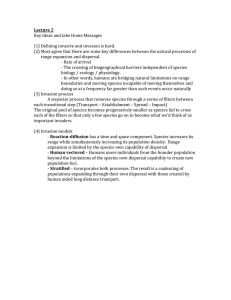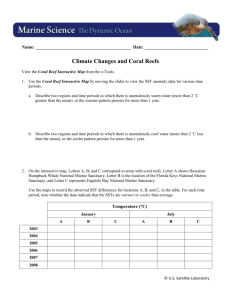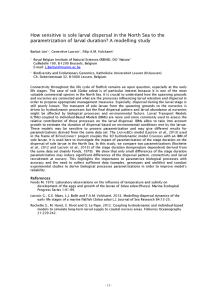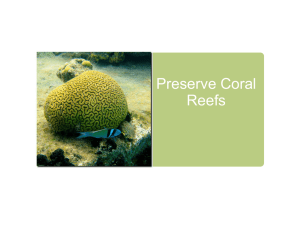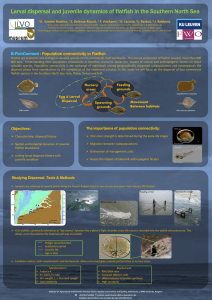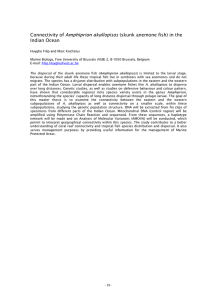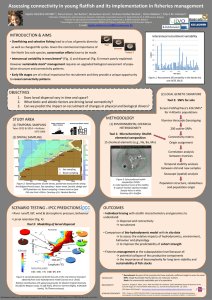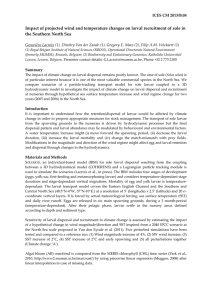Genetic structure of skunk clownfish populations in coral reefs in Madagascar
advertisement
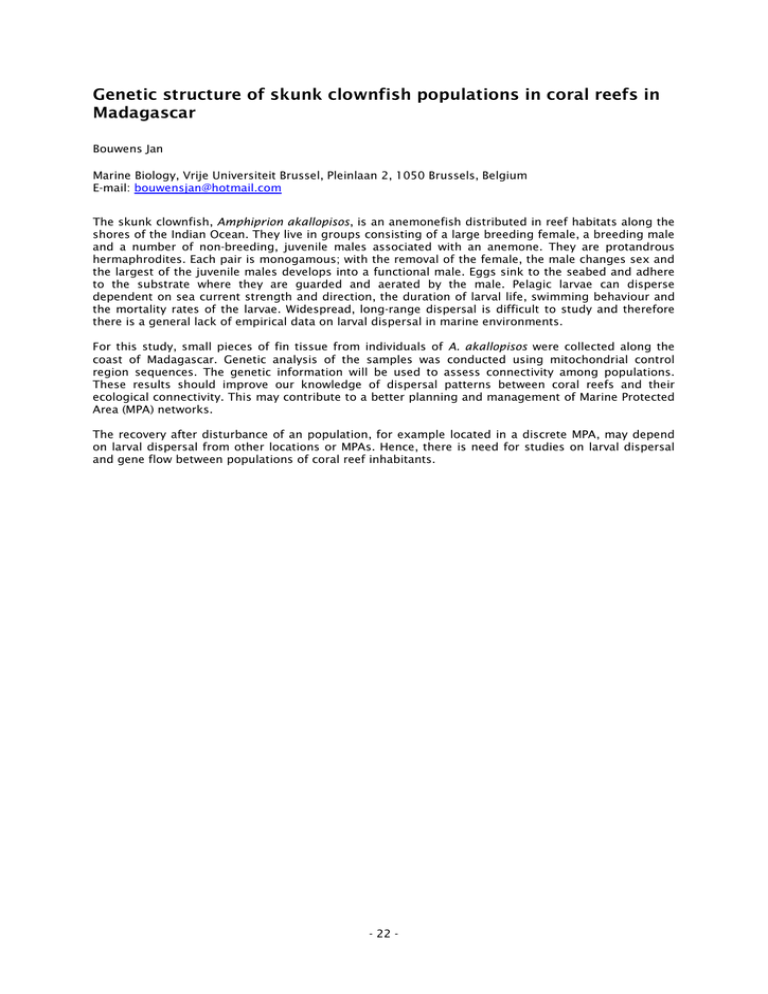
Genetic structure of skunk clownfish populations in coral reefs in Madagascar Bouwens Jan Marine Biology, Vrije Universiteit Brussel, Pleinlaan 2, 1050 Brussels, Belgium E-mail: bouwensjan@hotmail.com The skunk clownfish, Amphiprion akallopisos, is an anemonefish distributed in reef habitats along the shores of the Indian Ocean. They live in groups consisting of a large breeding female, a breeding male and a number of non-breeding, juvenile males associated with an anemone. They are protandrous hermaphrodites. Each pair is monogamous; with the removal of the female, the male changes sex and the largest of the juvenile males develops into a functional male. Eggs sink to the seabed and adhere to the substrate where they are guarded and aerated by the male. Pelagic larvae can disperse dependent on sea current strength and direction, the duration of larval life, swimming behaviour and the mortality rates of the larvae. Widespread, long-range dispersal is difficult to study and therefore there is a general lack of empirical data on larval dispersal in marine environments. For this study, small pieces of fin tissue from individuals of A. akallopisos were collected along the coast of Madagascar. Genetic analysis of the samples was conducted using mitochondrial control region sequences. The genetic information will be used to assess connectivity among populations. These results should improve our knowledge of dispersal patterns between coral reefs and their ecological connectivity. This may contribute to a better planning and management of Marine Protected Area (MPA) networks. The recovery after disturbance of an population, for example located in a discrete MPA, may depend on larval dispersal from other locations or MPAs. Hence, there is need for studies on larval dispersal and gene flow between populations of coral reef inhabitants. - 22 -
